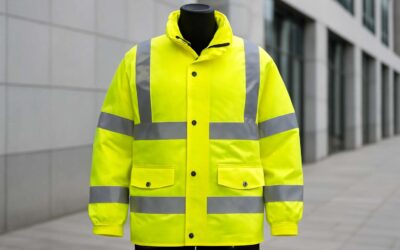
Reflective vests are a type of safety work clothing that uses high-visibility (hi-vis) reflective tape and fabric to increase visibility in dark areas. They are most commonly worn by construction workers and others who work near traffic or in dangerous locations.
These vests are available in different colors to help people stand out, whether they’re walking, running or biking on the street. They also come in a variety of sizes to fit most people’s bodies, including women’s and men’s.
Class 1 ANSI Vests
The basic design of an ANSI Class 1 safety vest is made up of a base cloth and thousands of high-reflective glass beads that are in direct contact with the air. The fabric is then placed on the torso and arms. This is what makes the vest brighter than regular clothes.
Depending on the job, a worker may need to wear a vest that is class 2 or 3. The standard outlines how much of each type of material must be used to meet the required standards. The color of the fabric is also a factor, as it should be a contrast to the background, which increases visibility in low-light conditions.
A worker might need a class 3 vest, for instance, if he or she is in a traffic-heavy environment. This vest is usually reserved for site inspectors, railway workers and emergency responders who are working close to traffic that travels more than 50 mph.
These vests are great for workers who need to be visible on the job and can be easily cleaned up. They are available in several different colors and are a must have for anyone who works in a hazardous area.
Many of these vests are also made with breathable fabrics that keep them cool and dry while you’re on the job. This will prevent sweat from building up and potentially causing heat-related problems on the jobsite.
Another great feature of these safety vests is that they’re very durable. They can withstand heavy use, and they’re usually designed with pockets for radios, tools or other gear.
Some of these vests are even equipped with zippers and mic tabs for easier communication on the job. This can be helpful for teams that need to share equipment or supplies.
Classes of Safety Vests
ANSI rated safety vests are classified according to the amount of both retroreflective tape and high-contrast (orange or lime) fabric that makes up the garment. All ANSI rated safety vests must include at least 155 square inches of reflective tape. Those that are class 3 should have a minimum of 165 square inches.
They should have a contrasting color on the front, back and sleeves to enhance visibility. This is important to ensure the workers are seen by drivers at all times, and it also helps reduce eye fatigue when wearing the vest.
These vests are available in various materials, including polyester mesh and solid polyester. Mesh is more breathable and can be worn in warmer climates, while solid polyester is typically more durable.



0 Comments